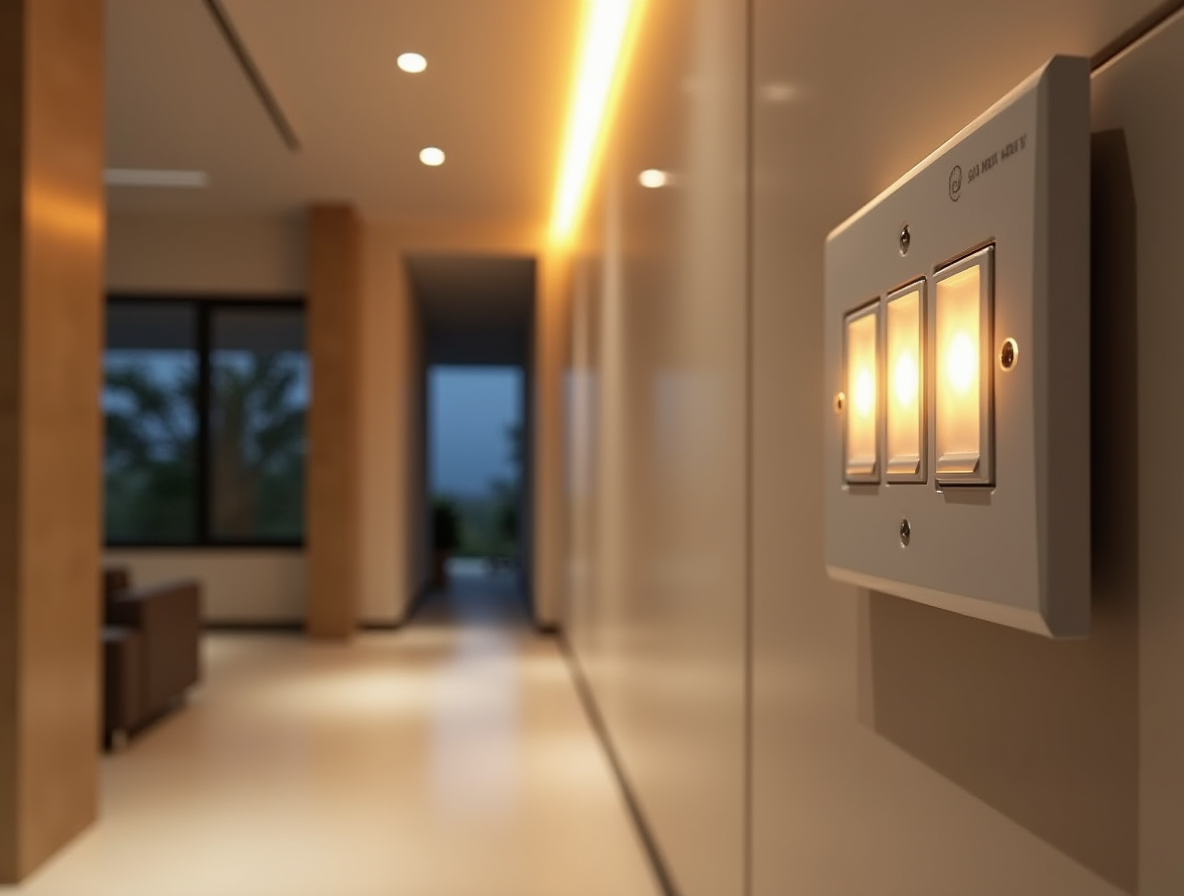Simplified Wiring for a 4 Way Switch: A Quick Guide
Have a lighting setup where multiple switches control one fixture? A 4 way switch could come in handy! No matter your skill set – DIY enthusiast, homeowner or electrician alike – wiring one is an invaluable skill and this guide simplifies it so that you can control your home lighting like an expert!
By the end of this post, you should understand how a 4 way switch operates, why it’s an essential tool in multi-way setups, as well as how to safely install and troubleshoot one.
Grab the necessary tools – this is your comprehensive guide for 4 way switch wiring!
Table of Contents

What Is a 4 Way Switch and Why Do You Need It?
A 4 way switch is a device that allows you to control a single light from three or more locations. Perfect for hallways, large living rooms, stairways, or any space where multiple control points make life more convenient.
But how does it work?
A 4 way switch is used in between two 3-way switches in a lighting circuit. It doesn’t connect directly to the light but instead changes the flow of electricity, allowing any switch in the setup to toggle the light on or off.
Imagine having to illuminate an expansive hallway, with doorways on either end and an entrance in the middle – with a 4 way switch, you could conveniently place controls at each location to control and operate one light seamlessly from any of them.
Benefits of Installing a 4-Way Switch:
- Convenience: Control lighting from multiple spots.
- Better Usability: Ideal for larger spaces or multi-entry rooms.
- Flexibility: Works seamlessly within modern home designs.
- Dimmer Integration (Advanced): To control lighting ambience and achieve desired ambience, pair with a 4-way dimmer switch.
If you’re not an expert, don’t worry—our straightforward steps and diagrams will help you make sense of it.

Essential Tools and Safety Tips
Before embarking on any electrical wiring tasks, ensure you have all of the appropriate tools and safety precautions ready.
Tools You’ll Need:
- Screwdrivers (flathead and Phillips)
- Wire stripper/cutter
- Voltage tester
- Wire nuts or connectors
- Electrical tape
- 4-way switch
- Electrical box
Safety First:
Electricity is no joke. Always follow these safety tips when working with wiring:
- Turn Off the Power at the circuit breaker before starting.
- Use a voltage tester to ensure the wires aren’t live.
- Double-check your wiring diagrams as incorrect connections could result in short circuits or electric shocks, potentially endangering yourself and others nearby.
- Wear insulated gloves when handling exposed wires.
- Consult an electrician if any step seems confusing to you.
How to Wire a 4 Way Switch Step-by-Step
Now that our tools and safety precautions are in order, let’s jump straight into the fun part: controlling lights remotely using two 3-way switches and one 4-way switch from three locations! Let’s focus on one example to demonstrate this process.

Step 1: Understand the Wiring Basics
Here’s how a typical 4-way switch setup works:
- 3 way switches are placed on either end of the circuit (one near the power source and the other near the light).
- The 4 way switch sits in between, acting as a bridge.
- Key components include line wire (power source), load wire (light), and traveler wires connecting the switches.
Step 2: Study the 4 Way Switch Wiring Diagram
No one should attempt to wire a 4-way switch without first consulting its wiring diagram – your go-to guide that ensures all connections are correct and ensures nothing slips by you!
[Insert a simple diagram indicating the position of switches and their connections for clarity.]
Step 3: Wiring the Circuit Components
1. Install the First 3 Way Switch Near the Power Source.
- Identify the line wire carrying electricity from the main panel.
- Attach the line wire to the common terminal on the switch (usually black or marked).
2. Connect the 4 Way Switch.
- Locate the two traveler wires from the first 3-way switch.
- Attach them to the input terminals on the 4-way switch (usually marked as “IN” or color-coded differently).
- Connect two additional traveler wires from the 4-way switch’s output terminals to the second 3-way switch.
3. Install the Second 3-Way Switch Near the Light.
- Connect the traveler wires from a 4-way switch to its traveler terminals on its traveler switches.
- Use a load wire to link the switch’s common terminal with your light fixture.
Step 4: Secure All Components
- Neatly tuck the wires into their respective electrical boxes.
- Fasten all switches to the boxes and attach the faceplates.
Step 5: Test the Circuit
- Turn on the circuit breaker.
- Operate all the switches to ensure the light turns on and off from each location.
Does everything work? Congratulations—you’ve successfully installed your 4-way switch!
Practical Applications of a 4-Way Switch
1. Hallway Lighting
Control hallway lights from both ends and the center for added convenience.
2. Stairways
Install one switch at the bottom, one at the landing, and another at the top—perfect for multitasking.
3. Living Rooms
Create seamless control for large spaces with multiple entries, such as open-plan living rooms.
4. Advanced Dining Room Setup
Combine a 4-way switch with a dimmer to enhance mood lighting. Imagine hosting dinner parties with the perfect ambiance!
Pro Tip: Always refer to your 4-way switch diagram before working on real-life installations.
Expert Insights on 4-Way Switch Wiring
- Electrician’s Advice: “Always make sure your traveler wires are correctly connected. Mismatched wires can confuse the system.”
- Home Improvement Specialist: “For DIY beginners, practicing with a mock setup before actual installation is a great way to build confidence.”
Even the pros emphasize the importance of safety and accuracy.
Troubleshooting Common Issues
If your 4-way switch setup doesn’t function as intended, here are a few potential causes to keep an eye out for:
- Misconnected Wires: Double-check your wiring diagram.
- Faulty Switch: Test each switch with a voltage meter to ensure they work.
- Loose Connections: Secure all screw terminals and connectors.
- Power Issues: Confirm the circuit breaker is on and all connections are intact.
When in doubt, consult a licensed electrician.

Upgrade Your Lighting Control with a 4-Way Switch
Now that you know the ins and outs of 4-way switch wiring, it’s time to put your knowledge into action. Whether you’re upgrading your home lighting or installing switches for a new build, mastering this skill will make your home feel more modern, efficient, and convenient.
For those who prefer professional guidance, don’t hesitate to consult an electrician or refer to resources like wiring diagrams and online tutorials.
Have questions about wiring setups or safety precautions? Drop them in the comments below!
Happy wiring!




